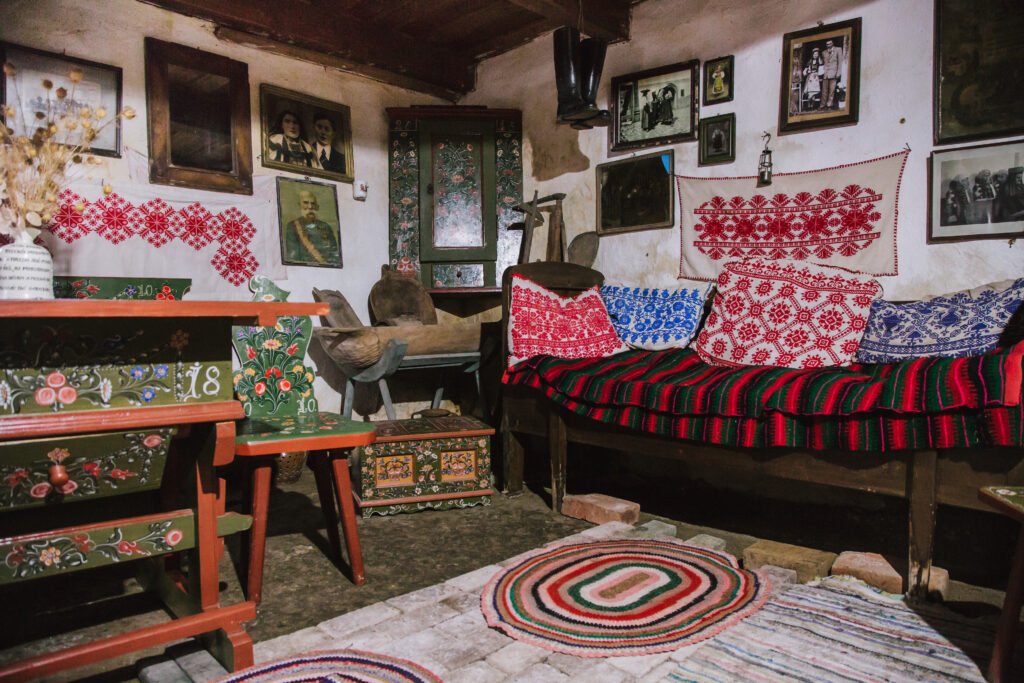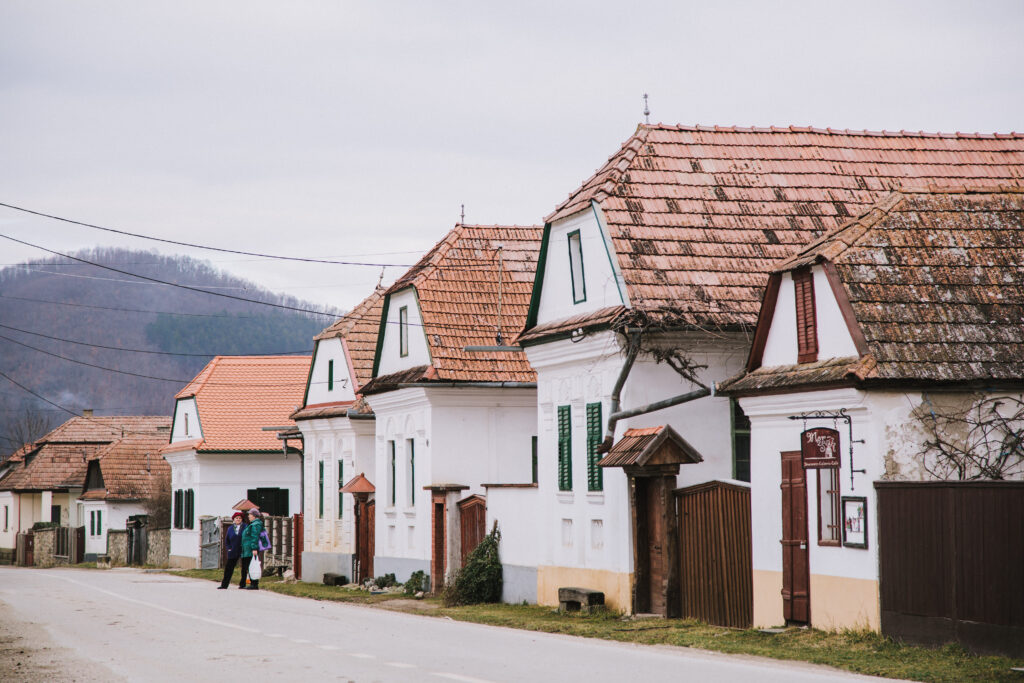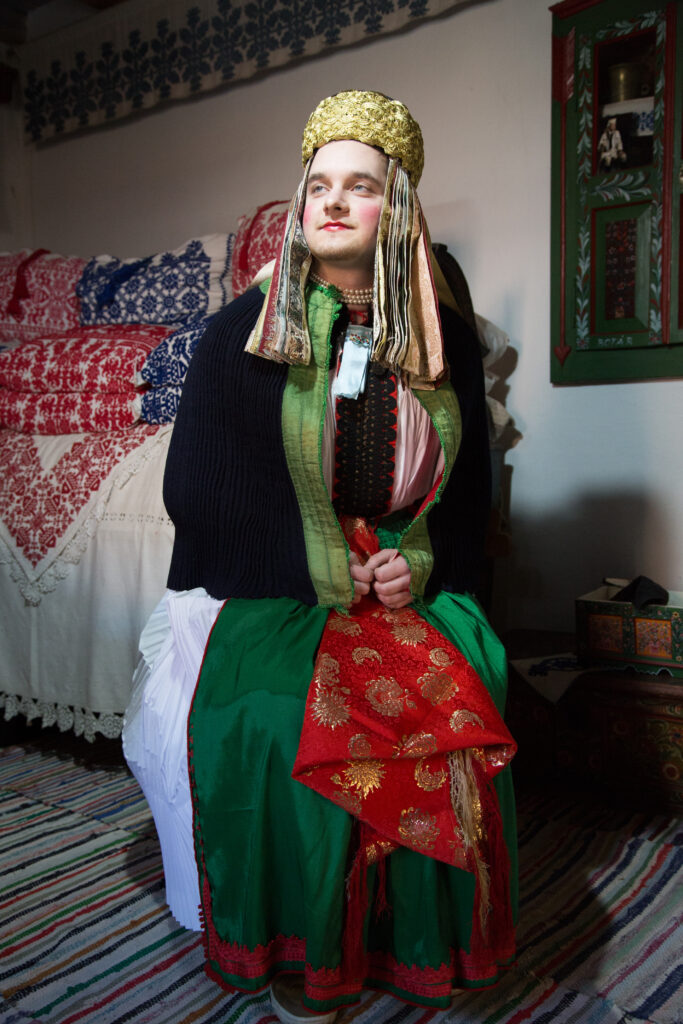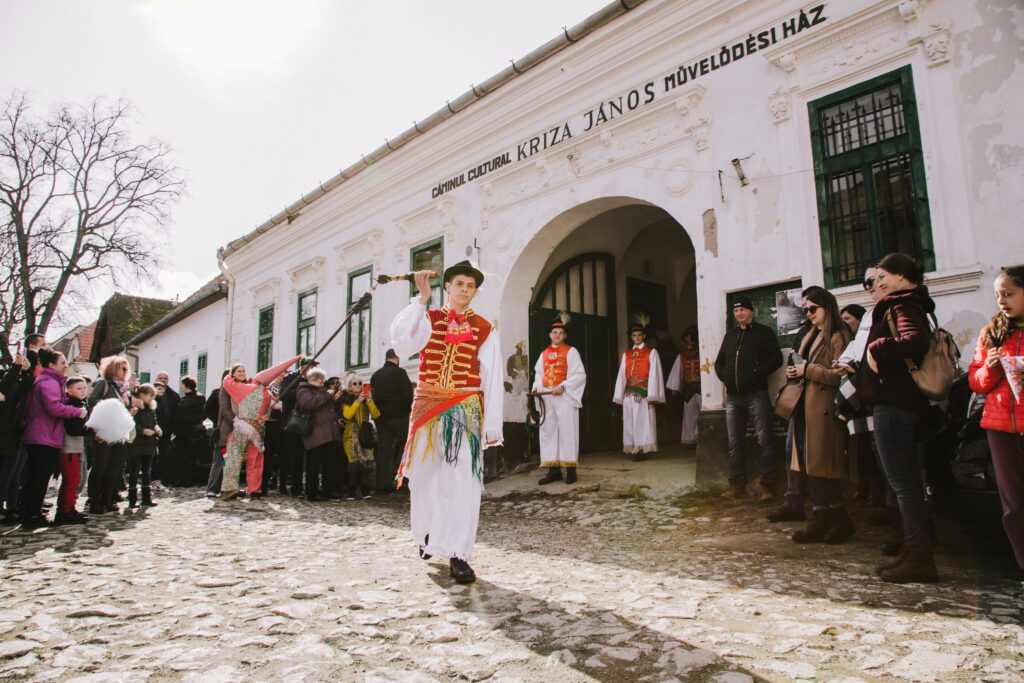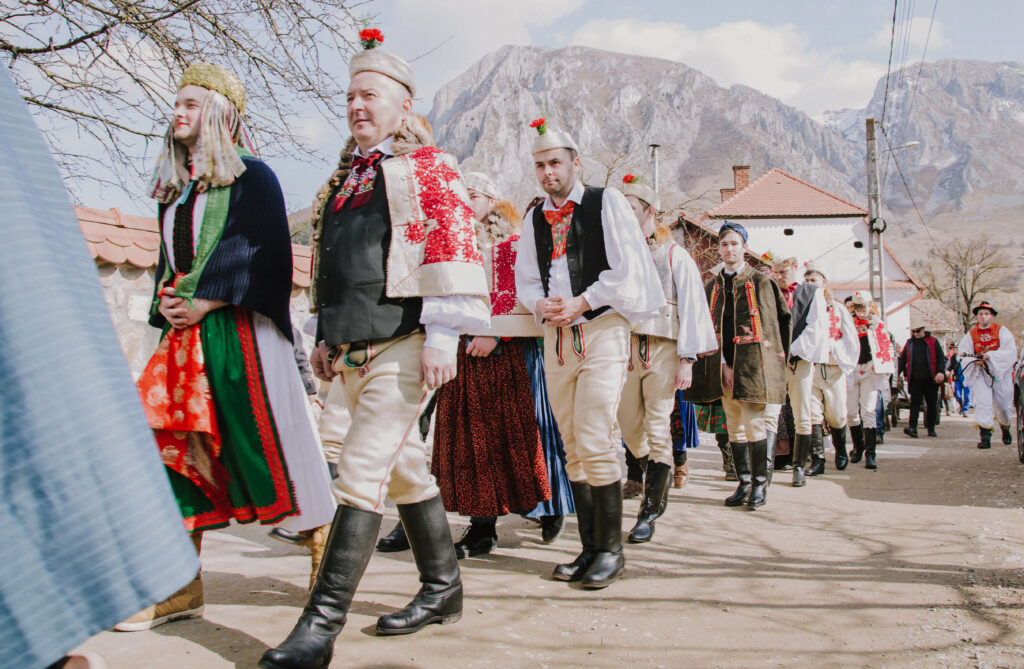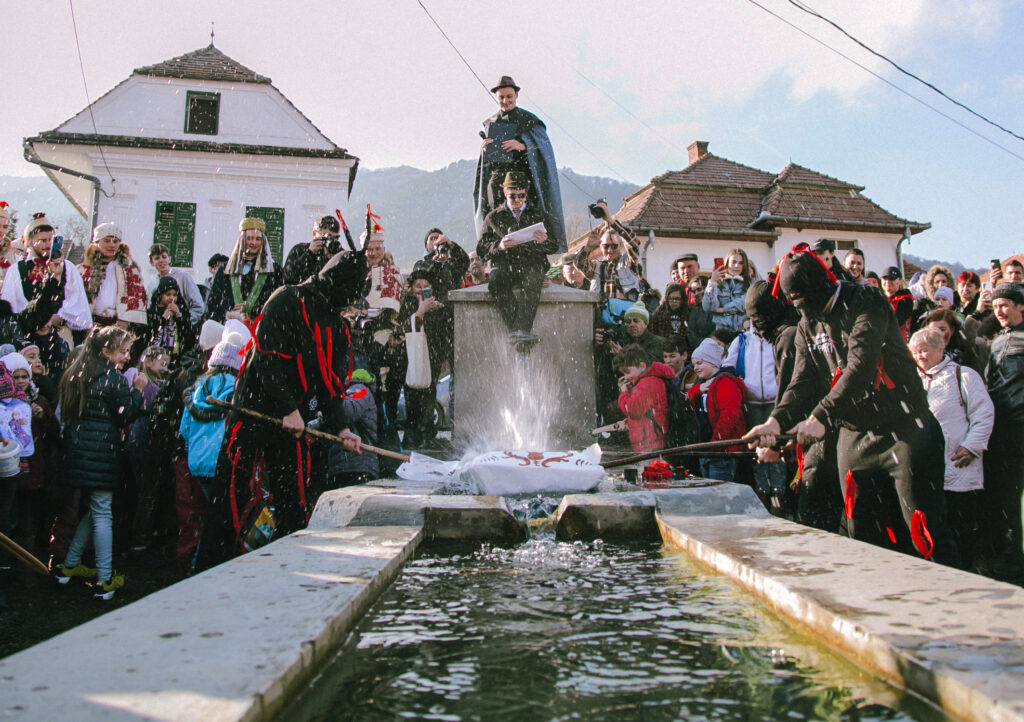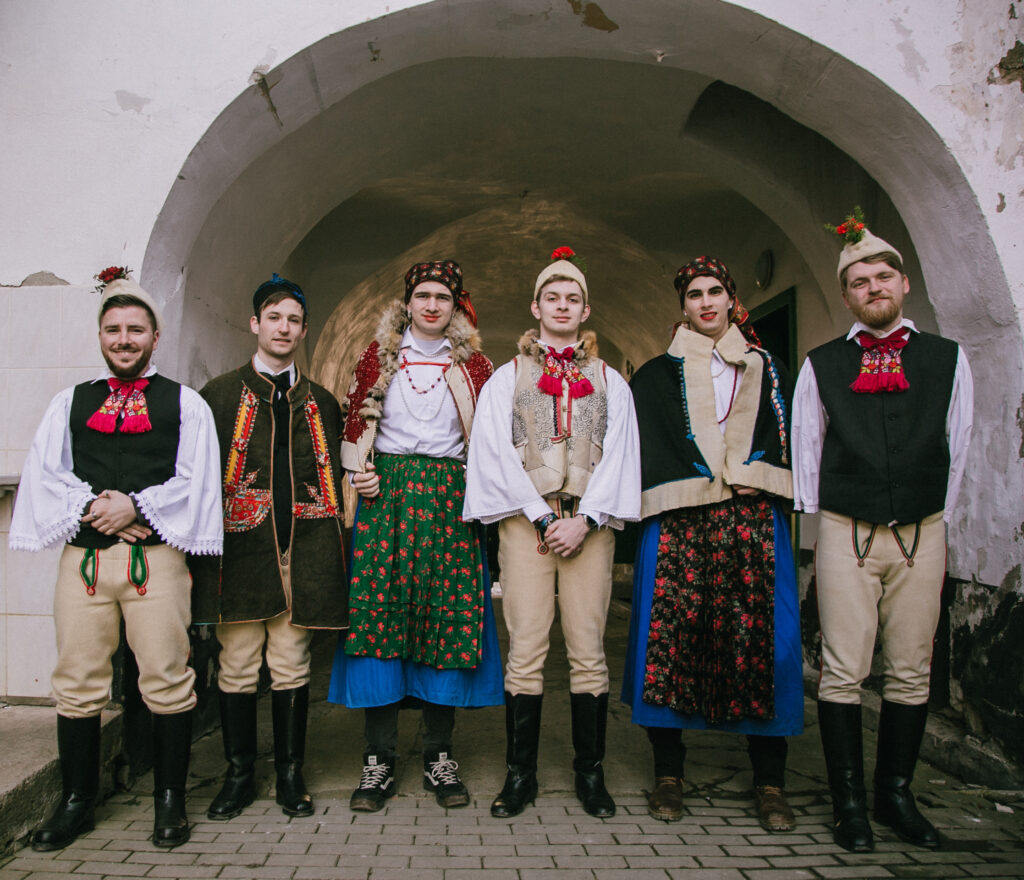Giving Winter a Funeral in Transylvania
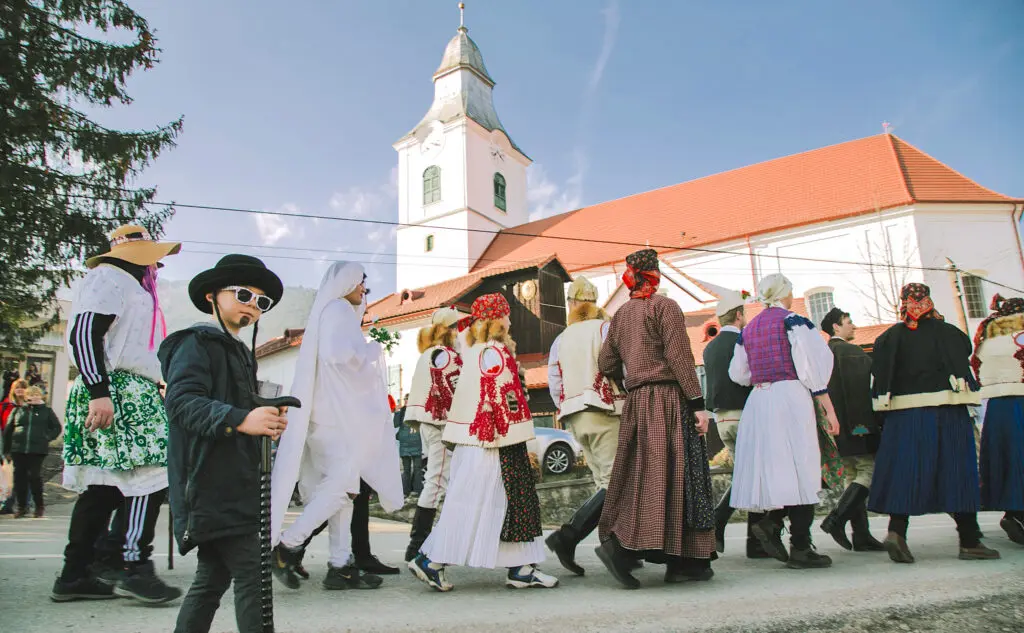
As the morning sun ambles over blunted cliffs, whips break the silence below. Their cracks echo off the pristine white houses, standing solemn and dignified.
On a crisp March day, the residents of Rimetea, a predominantly ethnically Hungarian village in Romania’s Transylvania region, are roused from winter dormancy to celebrate farsang—a centuries-old carnival tradition rooted in Romania’s Hungarian communities.
Its purpose? Bury winter and mock the social order. Farsang is a funeral procession where men dress as women, children beg for money, tricksters smear onlookers, and a donkey tows a faux casket.
Each year, the village of around 600 swells with visitors in the thousands, including children on school trips and tourists from nearby and abroad. They come not only for the carnival but also to visit what is considered by many to be Transylvania’s most picturesque village, known as Rimetea in Romanian or Torockó in Hungarian.
A prosperous iron-mining center throughout the Middle Ages, Rimetea was built by German settlers and Szeklers, an ethnically Hungarian group. The community always harbored a distinct identity, and when conflagrations burned down most houses on the market square in the late 1800s, the residents elected to rebuild the village uniformly to mimic its white Unitarian church.
As building exteriors became austere, however, the community’s multiethnic roots manifested in folk art that was anything but.
“Torockó is often referred to as a small ethnographic island,” says Ágnes Lassel, a guide working in the local museum. Surrounded by mountains, in a “sea of Romanian culture,” the village has proudly maintained its mostly Hungarian heritage over the centuries.
The village is “like a little jewelry box,” says Lassel.
Rimetea’s folk art is singular in Transylvania in its refined yet kaleidoscopic use of color, from radiant green furniture dazzling with flowers and tree of life motifs, to heavy embroidery of reds and blues, with spots of white that let the eyes rest.
The most embellished artistry, including a dozen or so different styles of folk costumes, comes from the 19th century when the village peaked economically.
While several residents have kept their folk costumes to this day, no collection is as remarkable as the Vígh family’s. Margit Vígh—and her mother before her—have been supplying members of the carnival procession with original antique clothes and accessories since she can remember.
“I was born into this task,” Vígh says. “My mother loved her torockói heritage and was very attached to these clothes. The tradition survived because she was so committed to it.”
Each year, she lends invaluable skirts, aprons, shirts, and jewelry to the participants and personally dresses the pártás bride, who wears the most elaborate attire.
When the bride is dressed, he joins the other participants—about 40 of them and all men, according to custom—who have been gathering in the community center. Donning a cornucopia of outfits, they prepare for their annual spotlight and spectacle.
At 2 p.m., to the rusty grunt of an accordion, men wearing bright maroon and white outlaw costumes take to the street and crack their whips to make way for the procession through the crowd.
The musicians follow, alongside children, teenagers, and adults dressed as “Transylvanian genre characters,” according to the ethnographer Ferenc Pozsony. There is a priest and cantor; people in the attire of hussars (historic cavalrymen); couples younger and older, modest and elegant. In modern times, devils, reapers, and a clown also join in.
Traditionally, “farsang is a time when the existing order can be suspended and criticized,” Pozsony writes over email. Farsang is a time of playfulness, of free-spirited fun, of ridicule. It parodies a funeral procession for the personification of winter, which lies symbolically in a white cardboard casket on a wooden cart towed by a donkey.
“Winter here goes by the name of Farsang Döme,” Lassel says. “Farsang Döme dies because he ate and drank too much. It means we should finish eating and drinking and begin fasting for [Lent].”
Participants walk along every street, sing folk songs, and read funeral rhymes to banish winter from all corners of the community.
Many of the characters are meant to ridicule the stereotypes they portray. Döme’s casket for example, is followed by men dressed as what the villagers call “spinsters.” These characters wail over Döme’s death and pull a log behind them—an ancient European symbol of fertility.
The clown and the devils also stay behind and mingle with the crowd. The devils sneak up on people, striping their cheeks with grease paint, whereas the clown, rather drunk and jolly, draws hearts on their faces.
With the sun approaching its nadir, the procession winds up at a drinking trough in Market Square. The priest stands on a stone podium with the cantor at his legs and Döme’s casket beneath them, floating on the water. They begin to read a mock poem to the village and the assembled crowd.
In the poem, they recall the major events of the previous year, touching sarcastically on many of the blessings and struggles endemic to rural life in Transylvania. While they praise the village council, they are nonetheless self-deprecating, poke fun at residents’ follies, and lament Rimetea’s waning population.
To end the carnival, the priest proclaims Farsang Döme dead, and the devils, who flank the water, smash his casket to pieces—in a way expelling the evil spirit of winter.
Since the late 1800s, Rimetea’s population has declined as job opportunities dwindled and residents moved away. This meant the carnival needed to evolve. To ensure enough participants, the modern procession also includes married men (previously forbidden to partake) and children from the local foster home. With only a few adolescents around, some customs disappeared, such as boys visiting girls’ homes to dance formally before farsang. And to accommodate the growing number of tourists, the festivities became less intimate and impish, and more theatrical and camera-friendly.
While not everyone agrees with the changes, as members of the community took to the streets to witness farsang in 2023, most looked sincerely happy to celebrate the village’s signature holiday.
Residents remain hopeful that as Rimetea continues to grow into a tourist destination, new opportunities will allow younger individuals to stay in the village—and the next generation will rejuvenate and carry forward its traditions.































